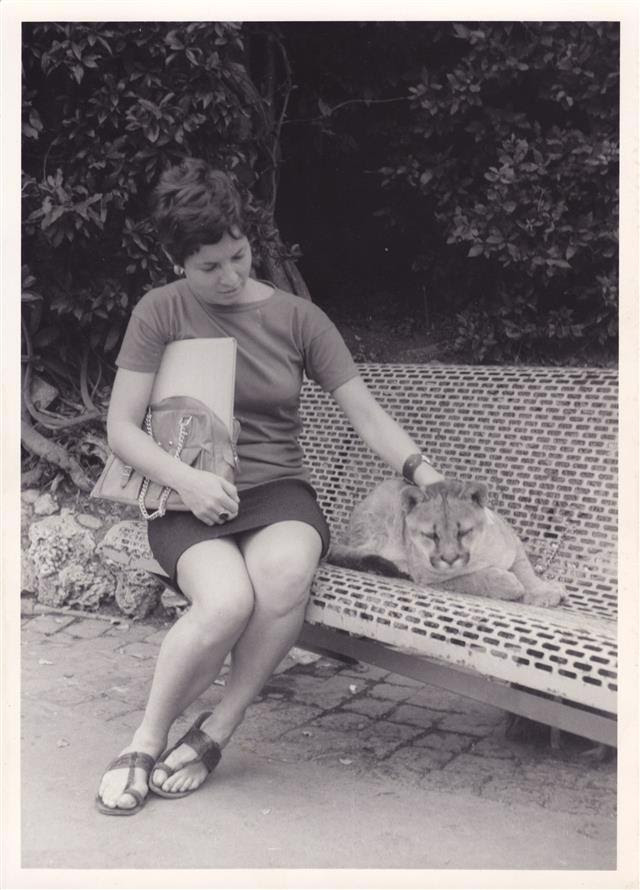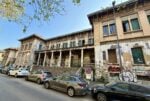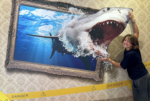Simone Forti – Largo Argentina

Mostra personale.
Comunicato stampa
When I think of the world, I feel mental models of dynamics. I almost see swirls of histories and
tensions forming in space and extending through my body. — Simone Forti
Artist, dancer, choreographer, writer. Simone Forti is a figure that transcends all boundaries
and incompatible with any form of expressive coercion. Forti was born in Florence in 1935 to
parents Milka and Mario Forti. While Forti’s father was from Prato, where her grandfather
Beniamino founded an important textile firm, her mother was of Jewish descent from
Eastern Europe. If Italy was the country that gave her birth, it was also the one she had to
escape from against her will. In 1938, the Forti family emigrated to Los Angeles as Mussolini
came to power. After enlightening studies, first with Anna Halprin in San Francisco and then
with Marta Graham and Robert Dunn in New York, and two marriages, with Robert Morris
and Robert Whitman, Simone returned to Italy in 1968 and chose to spend some time in
Rome.
At a time when the art scene was mourning the death of Pino Pascali, Forti emerged and
began working with Fabio Sargentini. Forti utilized Sargentini’s gallery space to rehearse and
perform her studies of movement. Galleria L’Attico became the venue for the artist’s first
performance of Sleep Walkers (aka Zoo Mantras), developed from her observations of
animals at the city zoo. Living nearby, Forti often visited to observe the movements of the
animals, developing an acute awareness that every movement – including the non-human –
had a potential quality that deserved exploration. Through the study of the head-swinging
movements and the repetitive rhythms of polar bears and elephants inside their enclosures,
the artist segmented and repeated their different movements. Forti created a musical score
of the body with defined pauses, intervals, and tempos, reflecting and investigating the
balance between captivity and freedom.
Forti also found herself fascinated by the strange amalgamation of memory and trauma that
Sant’Andrea de Scaphis | via dei Vascellari, 69, 00153 Rome | santandreadescaphis.com
oscillated between movement and enclosed space at Largo Argentina, an archaeological site
inaugurated in 1929 by Mussolini. By the time of Forti’s visits the ruins of ancient temples
had become a natural colony for feral cats to fiddle, eat, hang-out and rest. Here Simone shot
a series of photographs that in 2012 she chose to present in the form of an installation where
the images are projected as a slideshow onto a white sheet moved by the wind from a fan
that animates and brings to life both the photos and the animals.
Forti has consistently approached her work in more laboratory and improvisational rather
than object-oriented terms. Consequently, she always considered her work to be a living
matter that can be rethought and reshaped in both its potential and actual forms. Forti
began to engage with the medium of exhibitions in the early 2000s which reinforced this
approach: seamlessly blending disciplines, intertwining dance, choreography, and the
written word. This deliberate fusion serves as a poignant reminder that artistic expression,
for her, is not confined to a singular medium but rather a dynamic interplay of various
forms.
A new of book of poems by Simone Forti, published by NERO, will be presented for the
conclusion of the exhibition, and on the closing day of the exhibition three songs sung in
Italian by the artist from the album Al di là will be played in the church. Writing is an
extension of Forti's voice, and drawing is an extension of her body. Three poems make up
this new book in which the artist scrutinises the outside world, scanning and probing its
very details: sounds, lights, movements. The stillness of her body is counterbalanced by the
vivacity of her gaze and the fervour of the city of Los Angeles. As one reads these poems, one
moves forward with wonder amidst everyday memories, recollections of life, a sense of civic
duty, glimpses of a precarious world, the beauty of nature, melancholy, a rage to live.
Luca Lo Pinto



